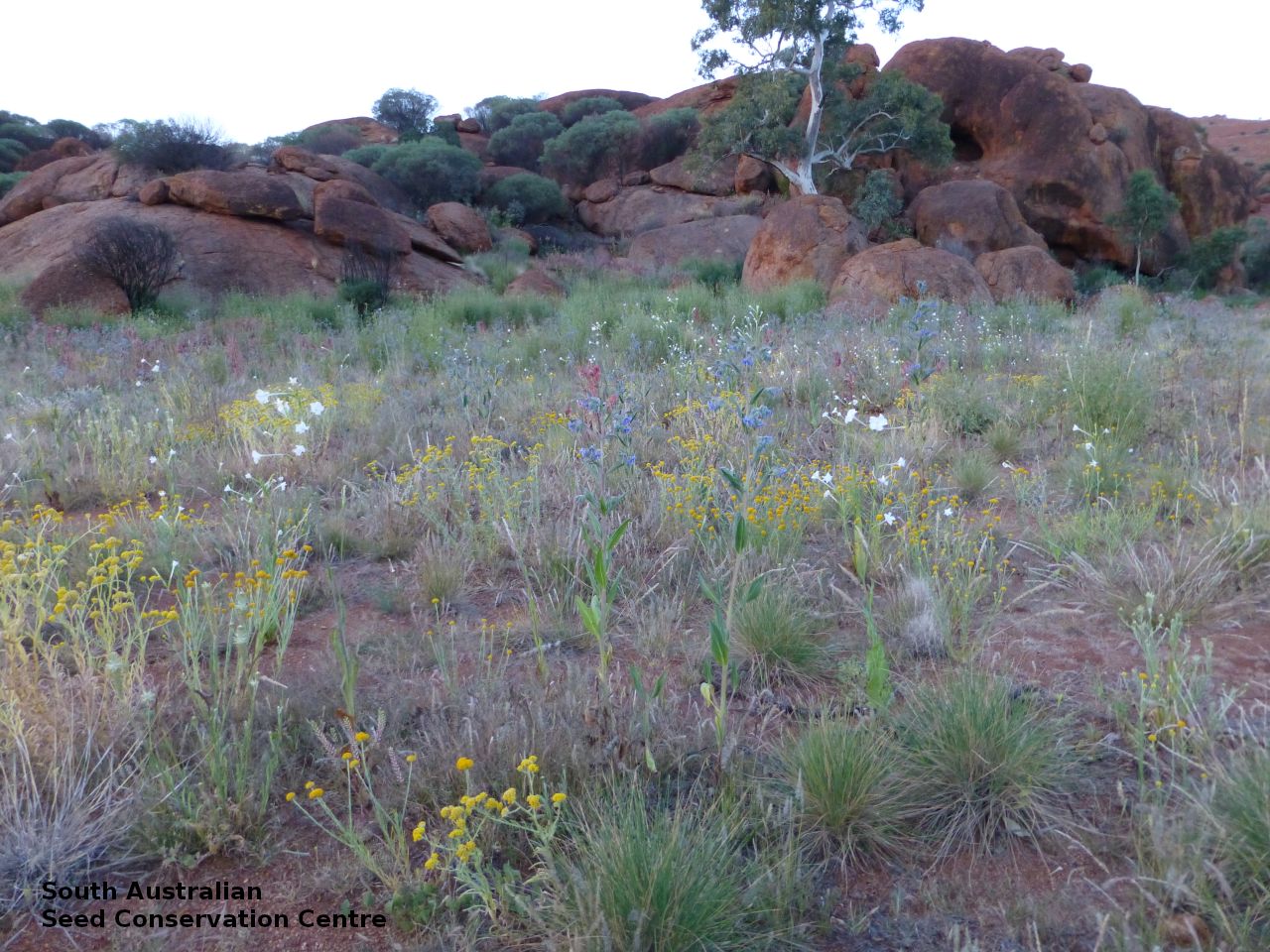
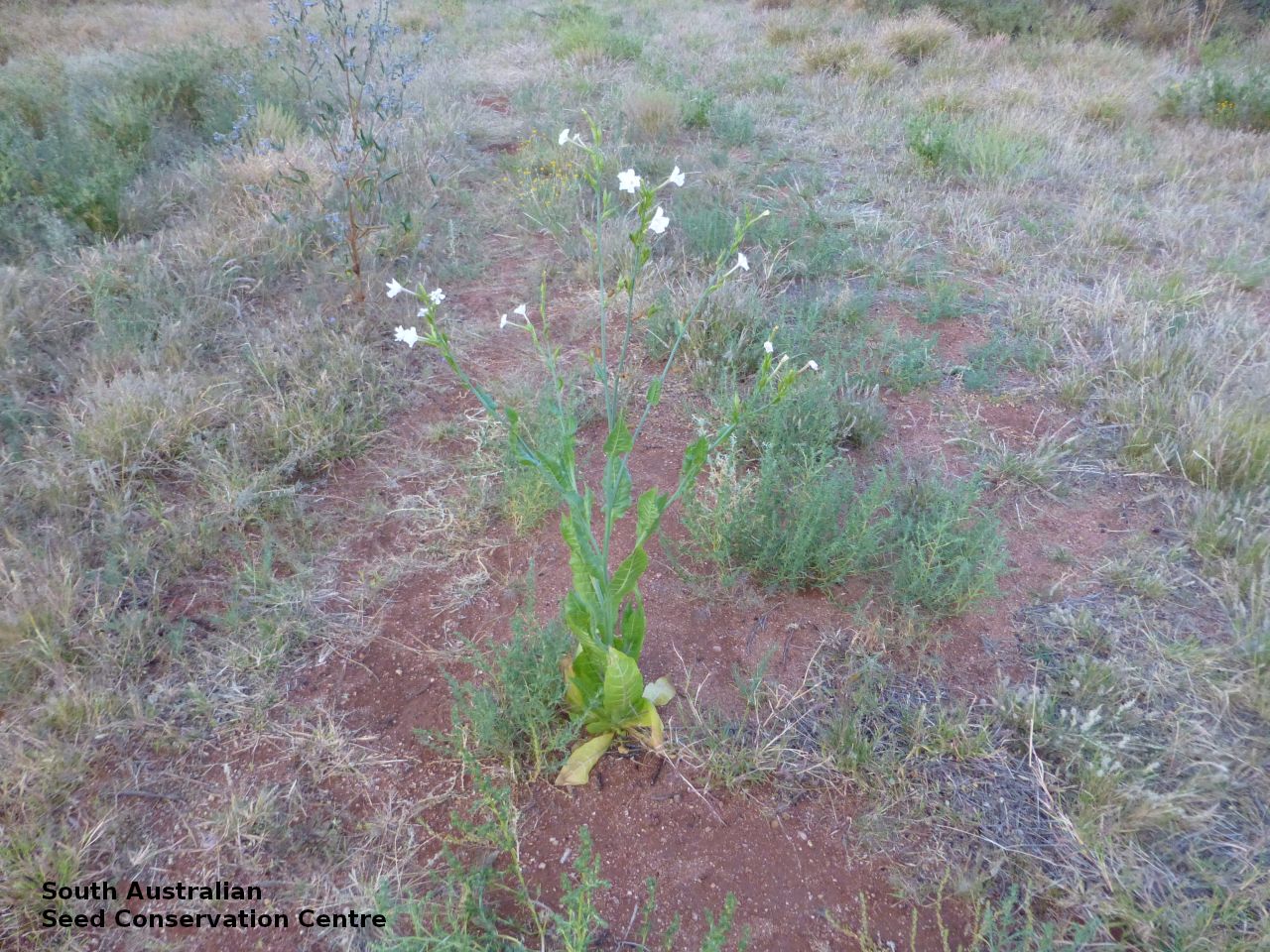
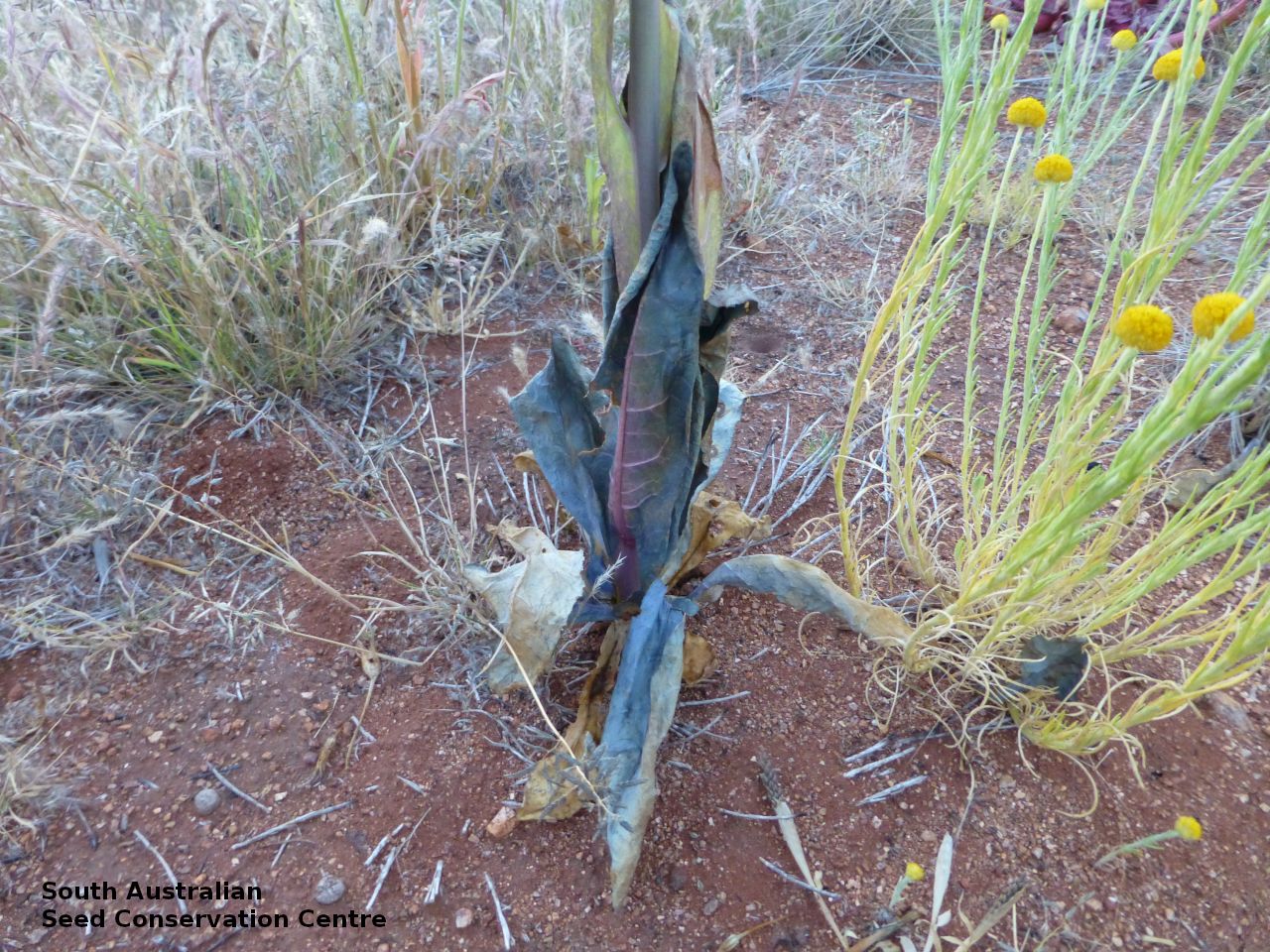
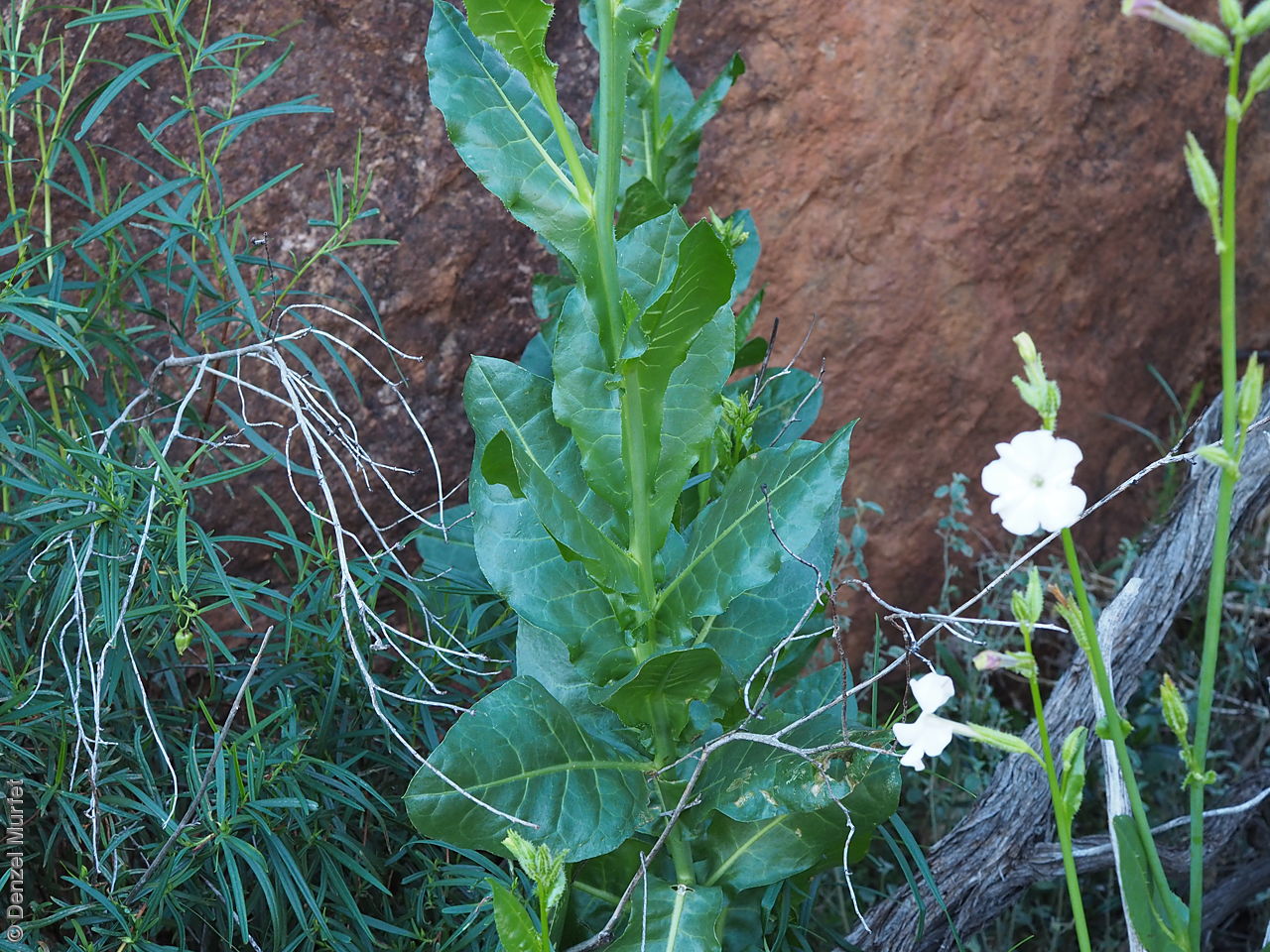
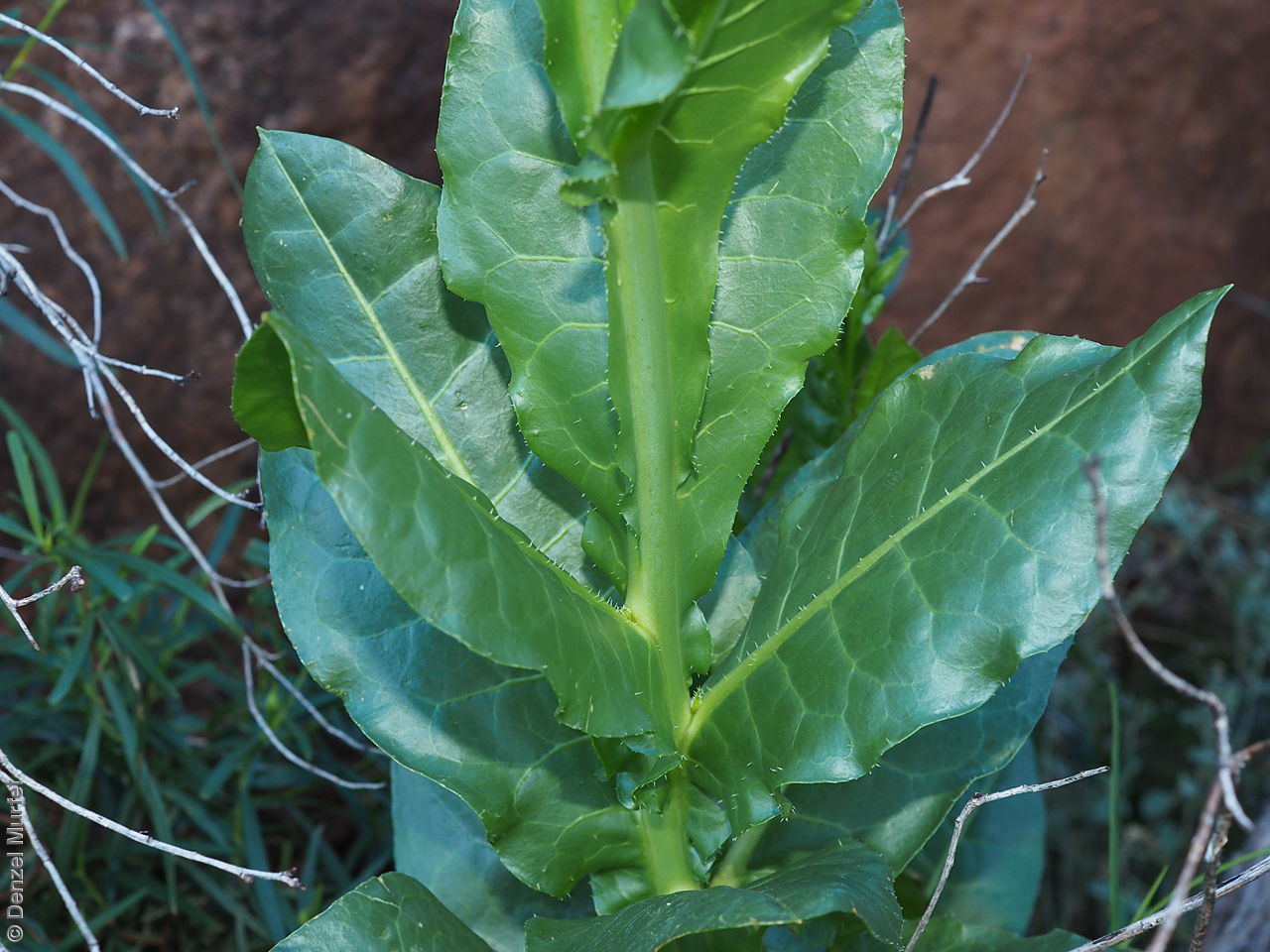
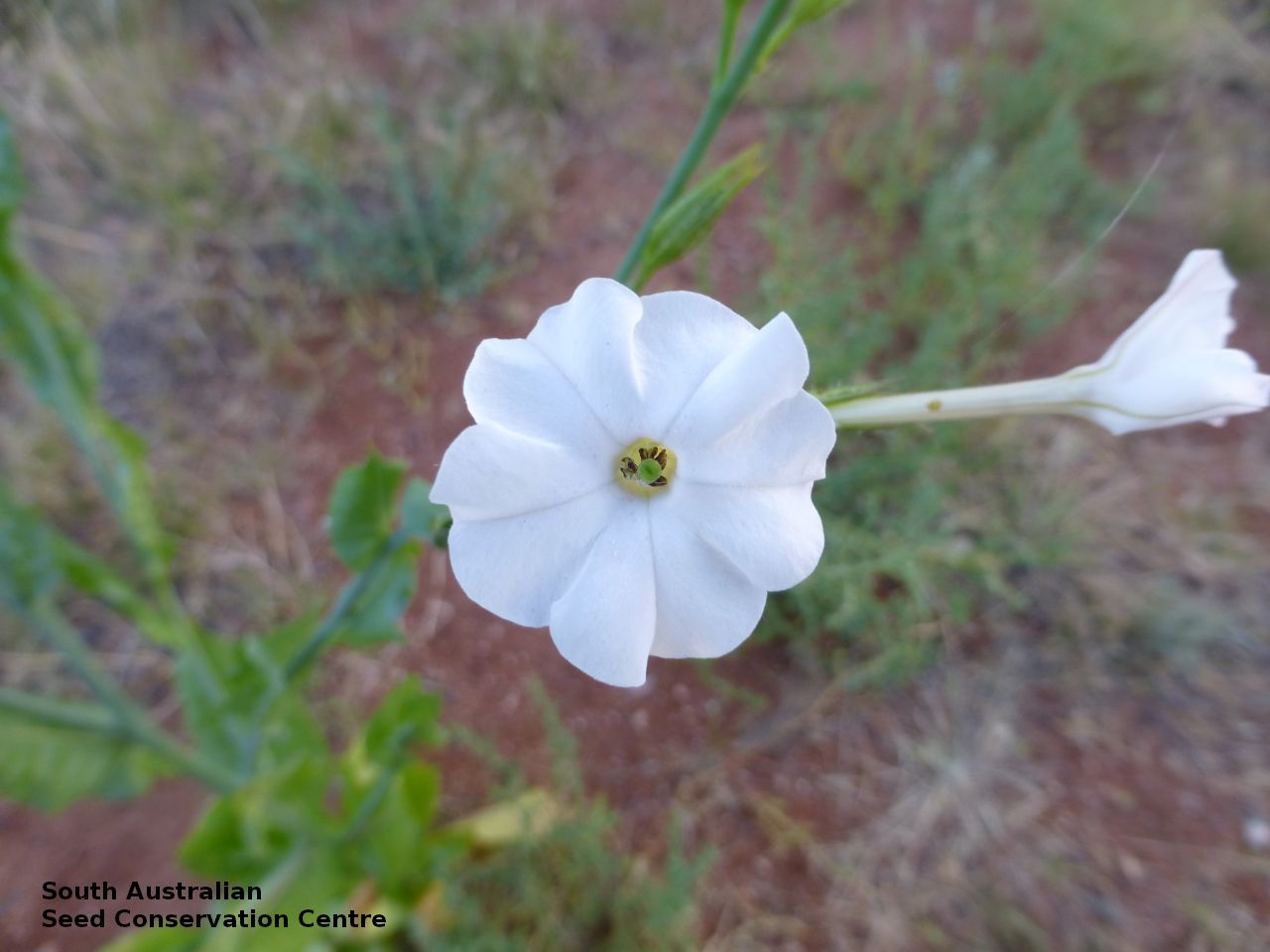
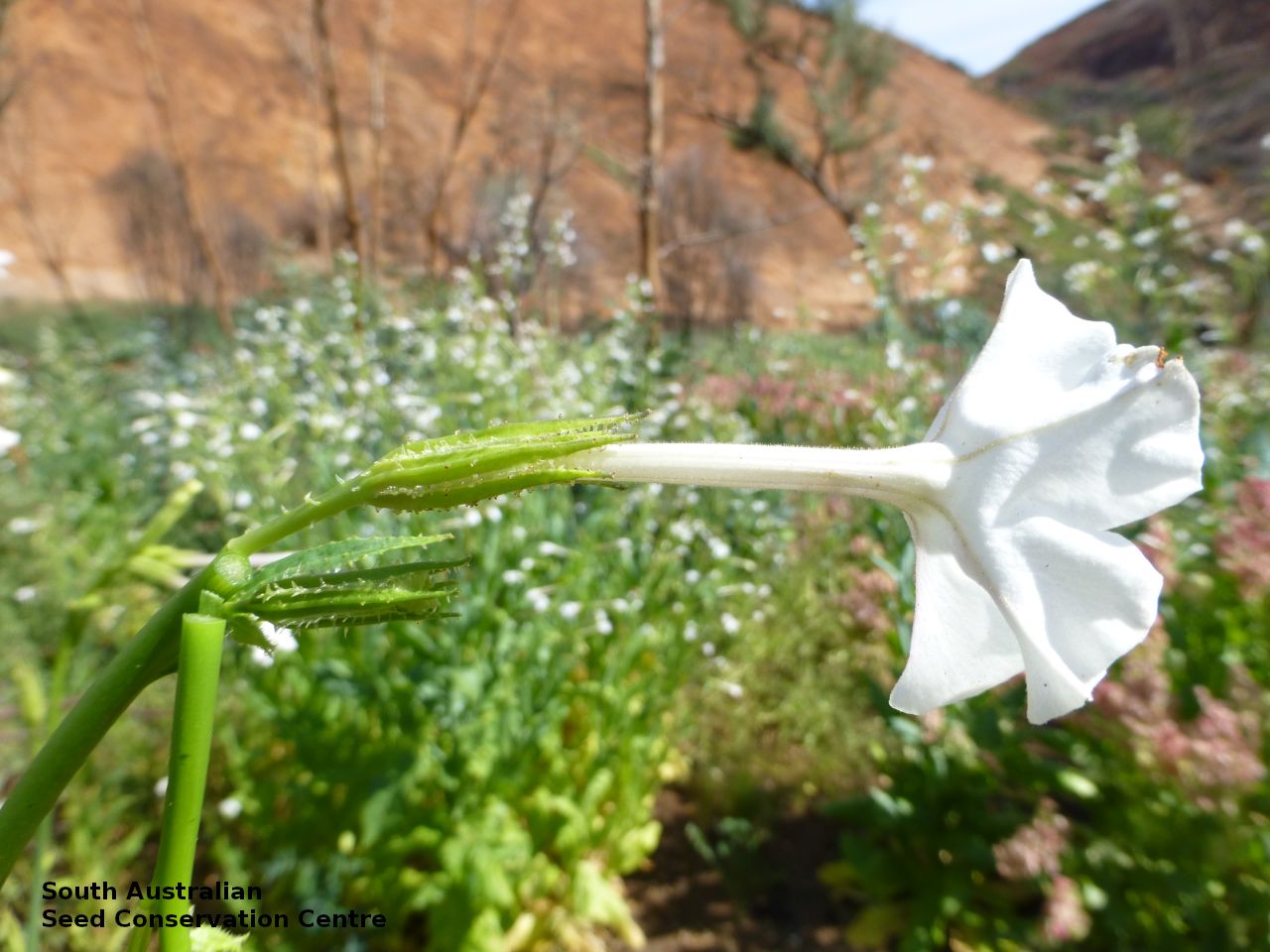
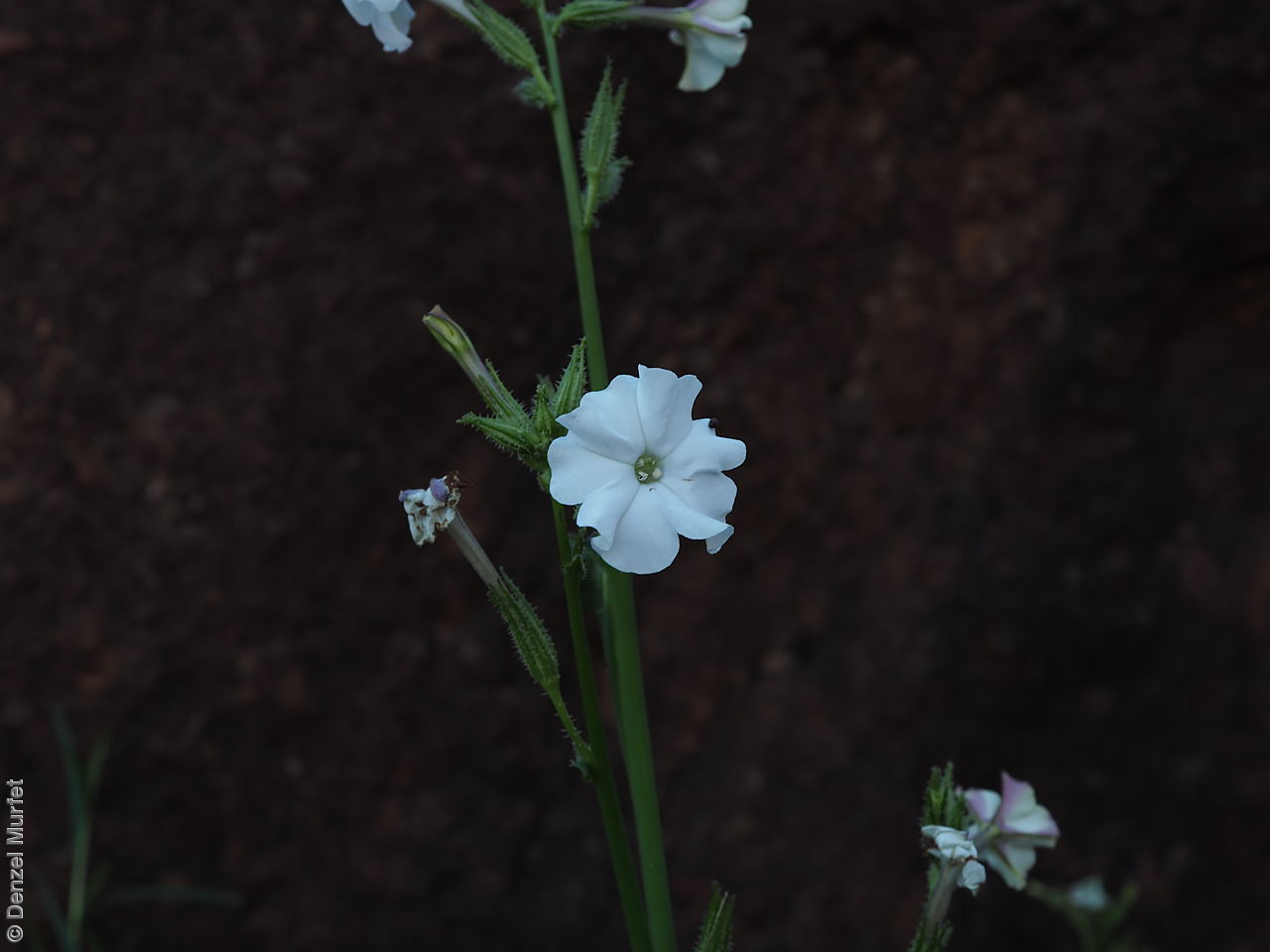
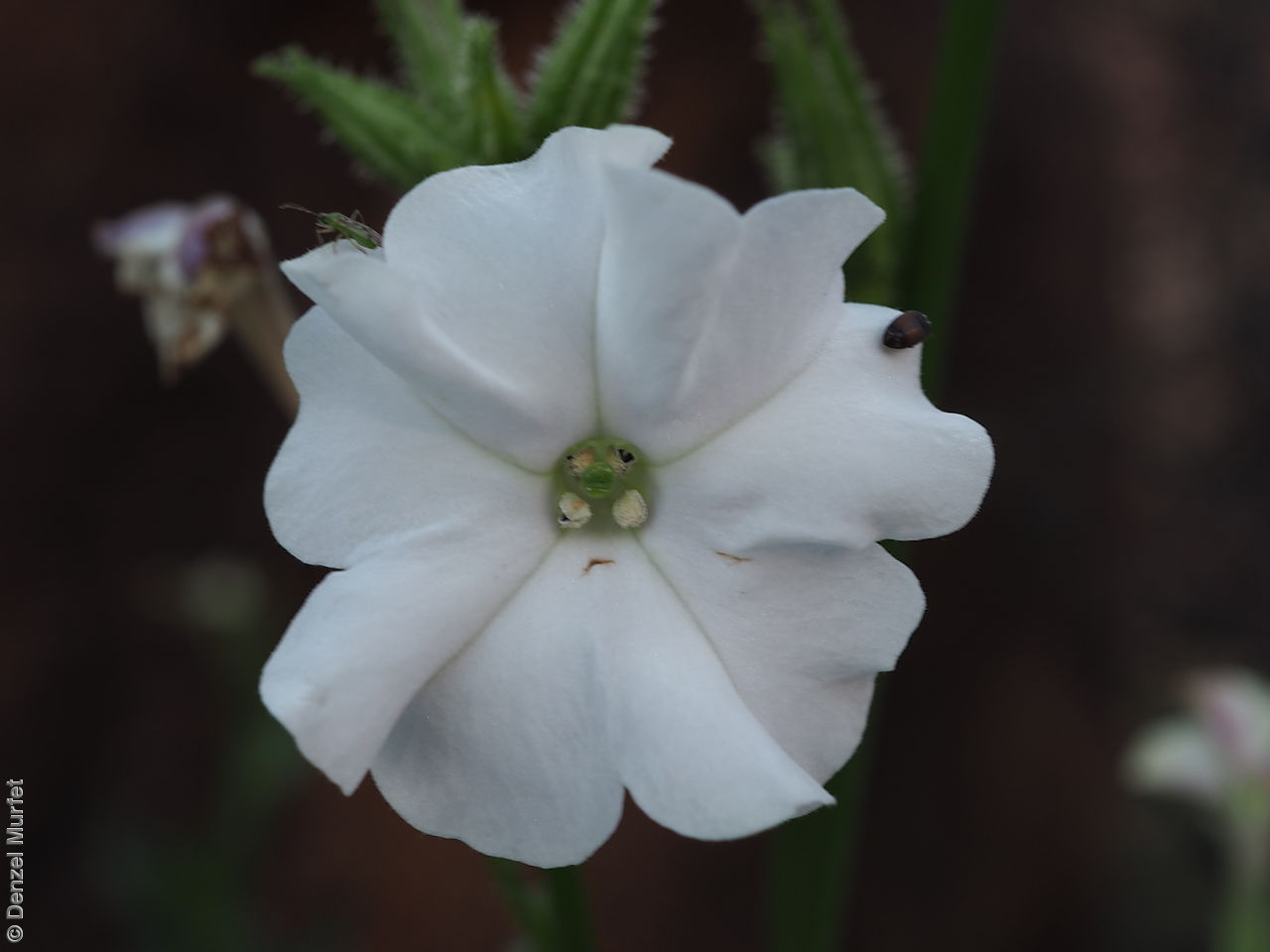
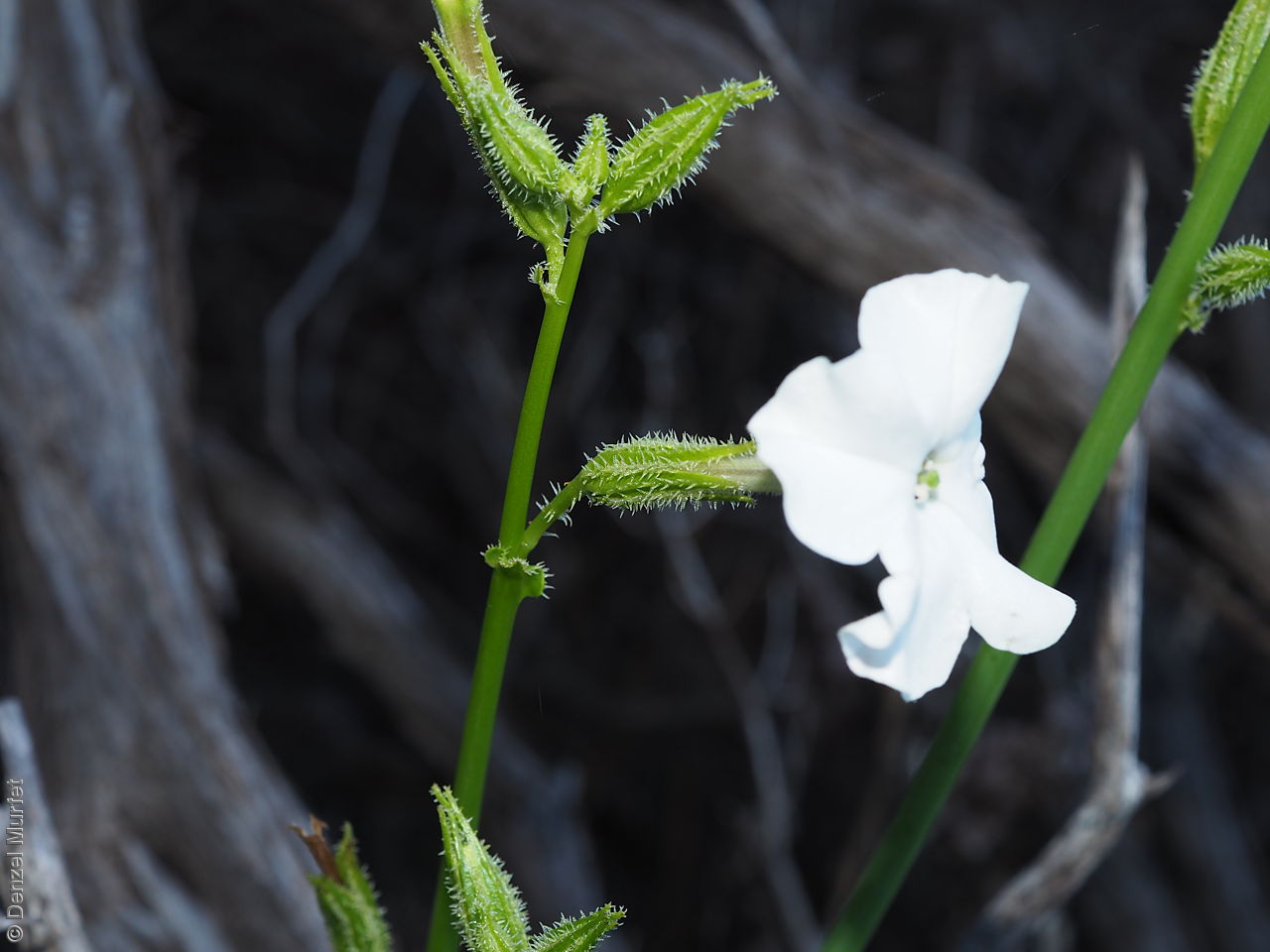
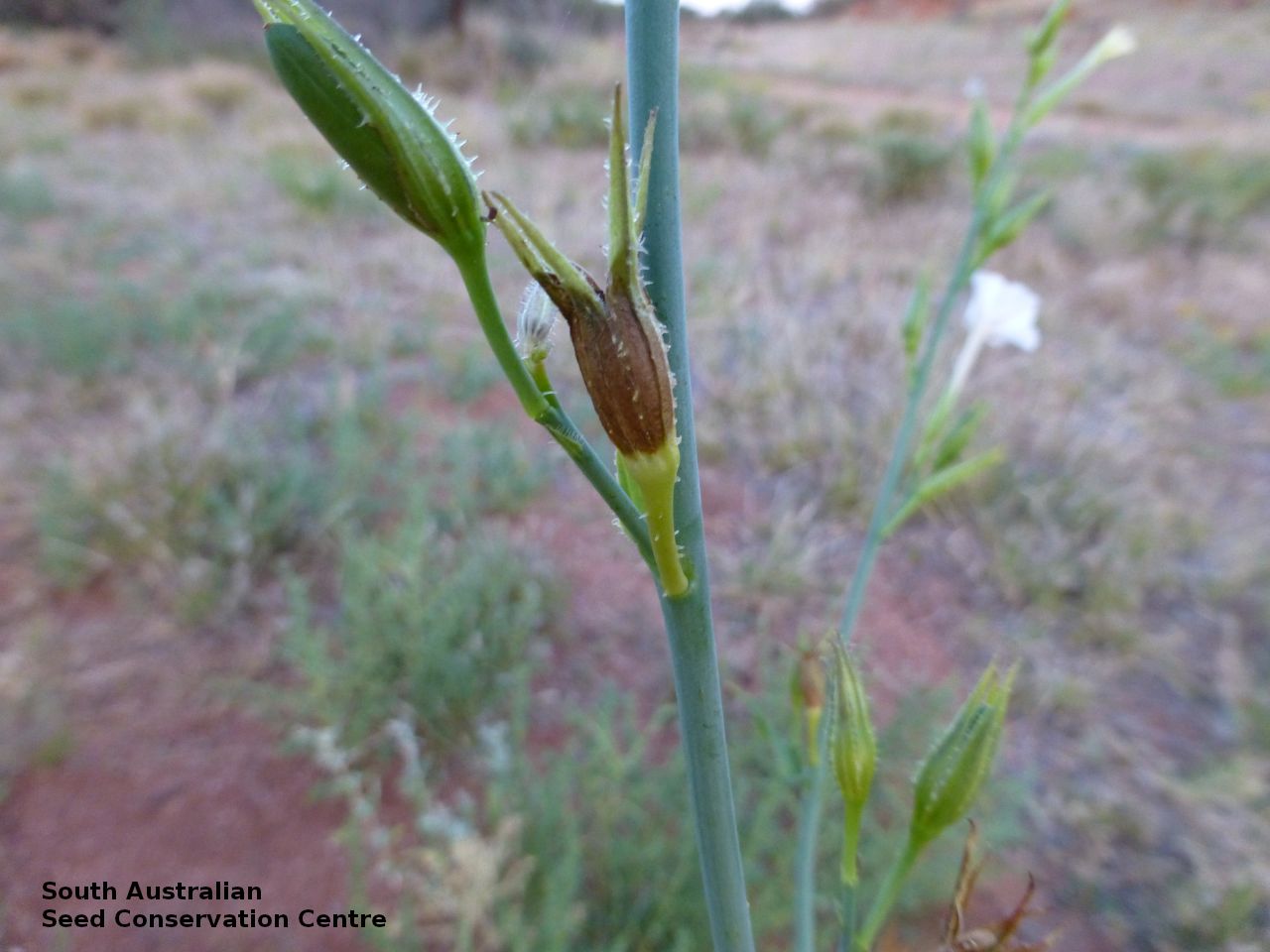
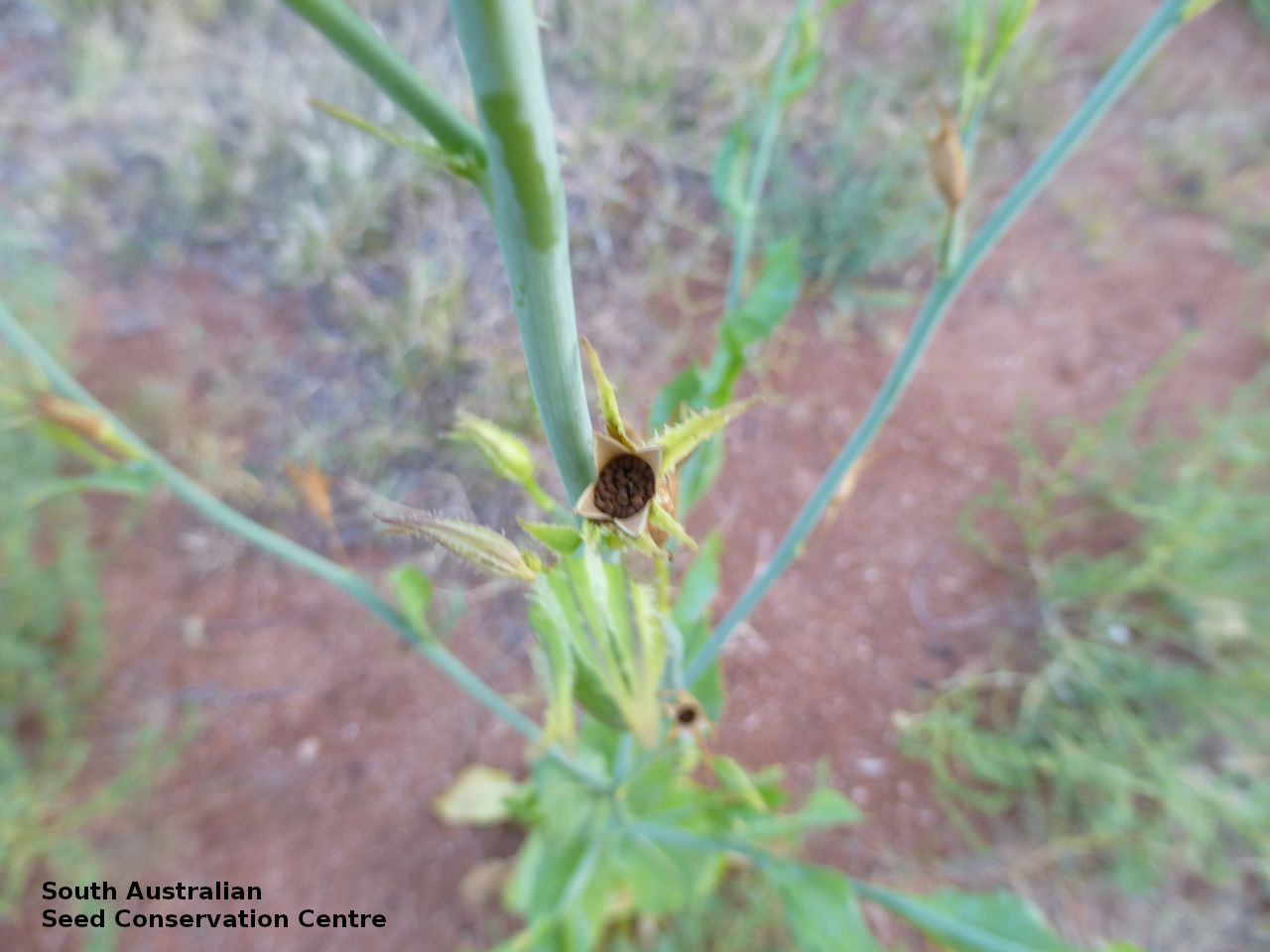
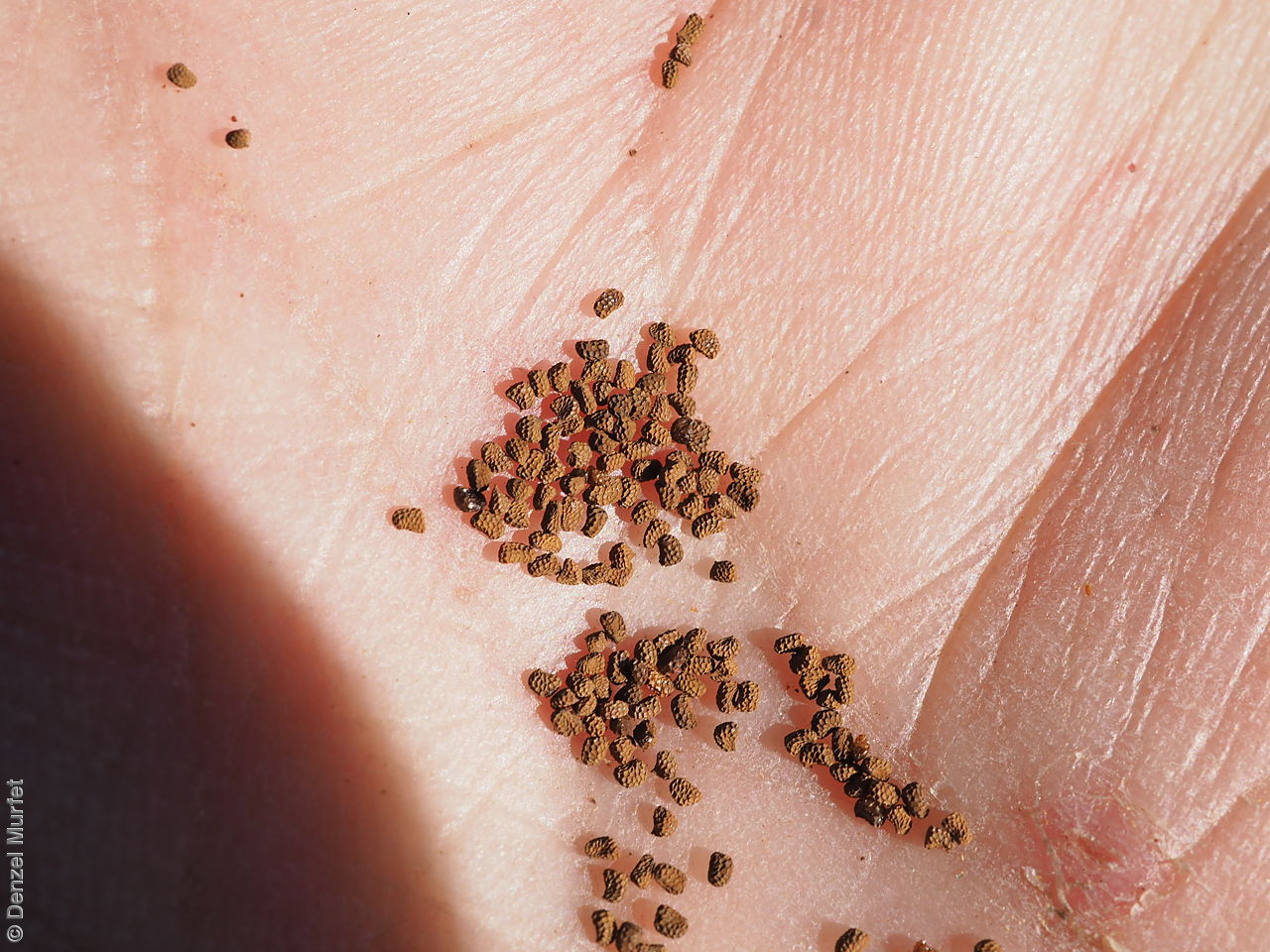
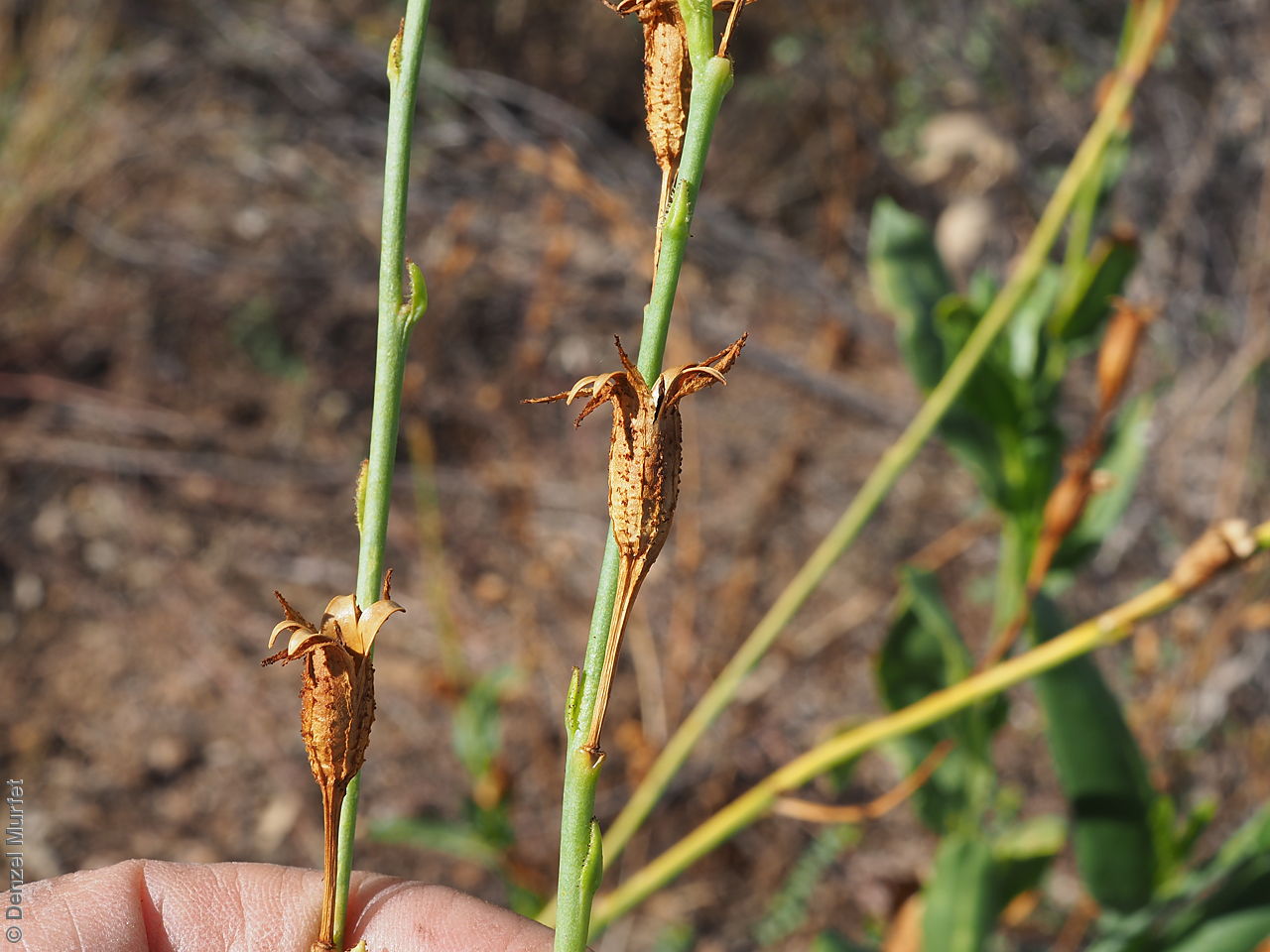
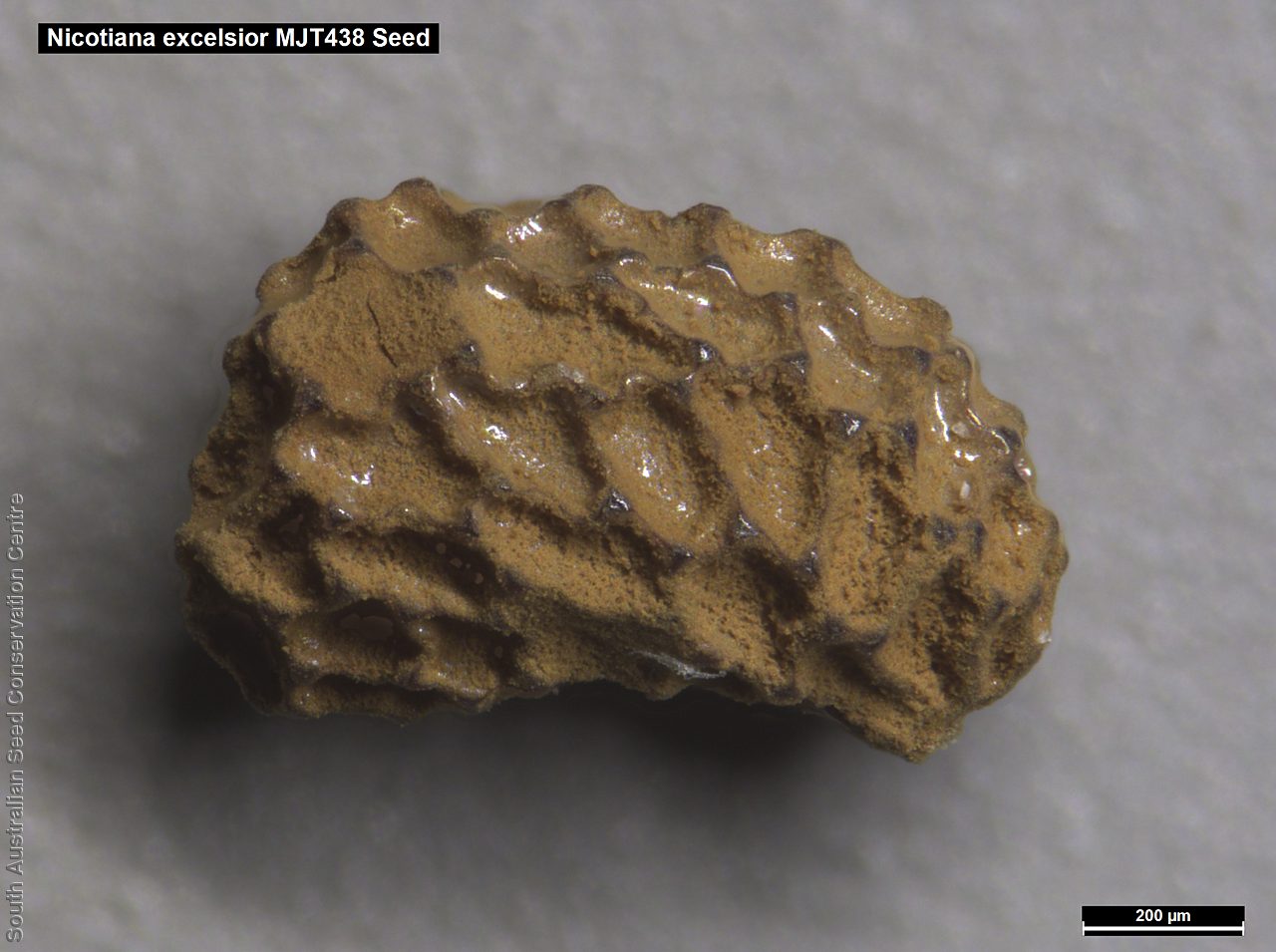

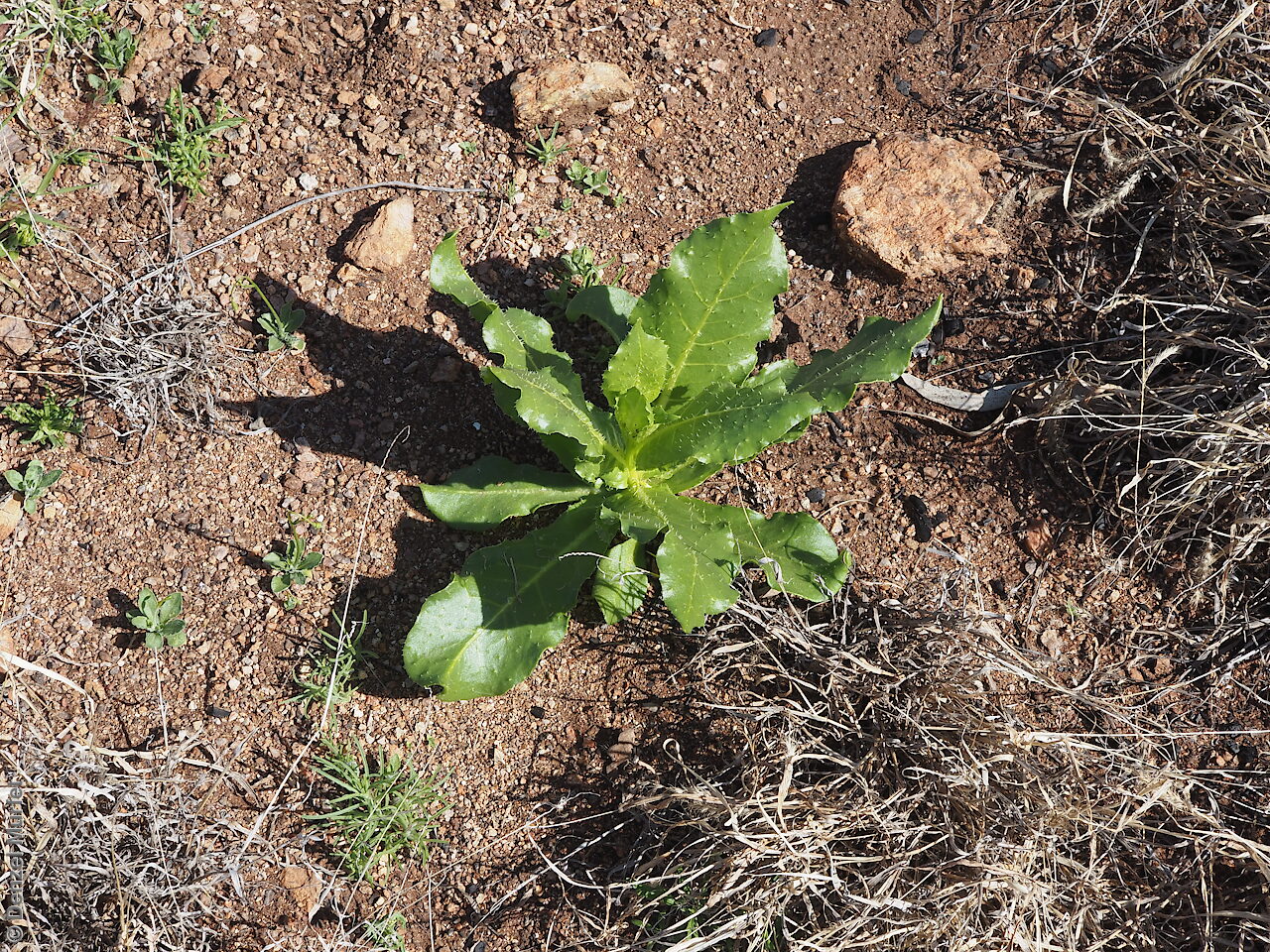

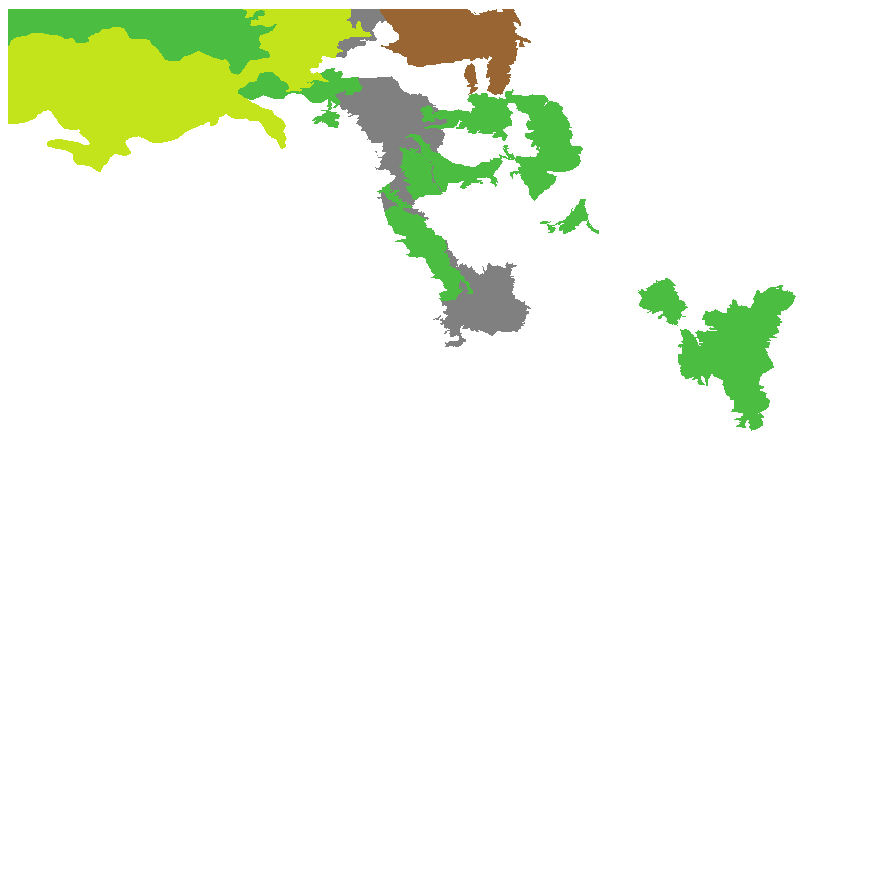
Prior names
Nicotiana suaveolens var. excelsior
Nicotiana macrocalyx
Common names
Giant Tobacco
Native Tobacco
Mingkul#pa
Etymology
Nicotiana, named after Jean Nicot (1530-1600), a French Ambassador for the King of France to Lisbon in 1560, who sent the first tobacco plant to France. Excelsior, from the Latin 'excelsa', meaning tall, referring to its habit.
Distribution and status
Found in the north-west part of South Australia, near the Northern Territory border, growing in rocky gullies and creeklines. Also found in Western Australia and the Northern Territory. Native. Uncommon in South Australia. Uncommon in the other States.
Herbarium regions: North Western, Lake Eyre
NRM regions: Alinytjara Wilurara, South Australian Arid Lands
AVH map: SA distribution map (external link)
Plant description
Leafy annual or perennial herb to 1 m high or more, with mostly glabrous leaves and stems. Basal leaves elliptic or ovate to 25 cm long. with short broadly-winged. stem-clasping petioles. Stem leaves often narrow-elliptic or lanceolate. Inflorescence, erect, few-branched panicle-spikes; sparsely hairy, with tubular white flowers. Flowering between April and September. Fruits are brown ellipsoid to ovoid capsule to 20 mm long. Seeds are brown reniform seed to 0.1 mm long and 0.7 mm wide, covered in small depressions. Seed embryo type is linear, fully-developed.
Seed collection and propagation
Collect seeds between September and November. Collect mature capsules that are brown or turning a pale straw-colour and contain brown seeds. Can collect individual capsules or break off the whole fruit spike. Place the capsules in a tray and leave to dry for one to two weeks, then rub the capsules gently by hand to dislodge the seeds. Use a sieve to separate the unwanted material. Store the seeds with a desiccant such as dried silica beads or dry rice, in an air tight container in a cool and dry place. From one collection, the seed viability was high, at 100%.
| Location | No. of seeds (weight grams) | Number of plants | Date collected | Collection number Collection location | Date stored | % Viability | Storage temperature |
|---|---|---|---|---|---|---|---|
| BGA MSB | 30,500 (4.97 g) 30,500 (4.97 g) | 30+ | 4-Sep-2013 | MJT438 North Western | 24-Mar-2015 | 100% | -18°C |
| BGA | 43,000 (6.12 g) | 22-Jul-2017 | DEM8851 North Western | 30-Jun-2018 | 100% | -18°C, -80°C |
Number of plants: This is the number of plants from which the seeds were collected.
Collection location: The Herbarium of South Australia's region name.
% Viability: Percentage of filled healthy seeds determined by a cut test or x-ray.